Dionae History: различия между версиями
>Caelphon |
>Caelphon |
||
| Строка 9: | Строка 9: | ||
===First Discovery=== | ===First Discovery=== | ||
[[File:DionaeHistory3.png|thumb|alt=First Discovery.|The first discovery of the Dionae lead to a rush for a rare mineral formed within a Dionae - Ambergris.]] | [[File:DionaeHistory3.png|thumb|alt=First Discovery.|The first discovery of the Dionae lead to a rush for a rare mineral formed within a Dionae - Ambergris.]] | ||
One can speculate that Dionae were originally discovered by Skrell Prospectors on an arctic planetoid orbiting the Xelp system. The Skrell Prospectors were originally sent to Xelp III in order to locate minerals that would be used for the reconstruction of Qerrbalak, but instead stumbled upon unique mineral surrounded by organic weeds, this mineral was later found to be Ambergris, leading to the ‘Ambergris Rush’ of the 2220s, where hundreds if not thousands of Skrell dedicated their time and energy to searching for more of this rare mineral. The rush would last until 2232 CE - when Skrell Prospectors could no longer locate Ambergris. It is suspected that during this period of time the Skrell had slaughtered what is now known as an Echion Colossus. | One can speculate that Dionae were originally discovered by [https://wiki.aurorastation.org/index.php?title=Skrell Skrell] Prospectors on an arctic planetoid orbiting the Xelp system. The Skrell Prospectors were originally sent to Xelp III in order to locate minerals that would be used for the reconstruction of [https://wiki.aurorastation.org/index.php?title=Notable_Skrell_Systems_and_Locations#Qerrbalak.2C_Homeworld Qerrbalak], but instead stumbled upon unique mineral surrounded by organic weeds, this mineral was later found to be Ambergris, leading to the ‘Ambergris Rush’ of the 2220s, where hundreds if not thousands of Skrell dedicated their time and energy to searching for more of this rare mineral. The rush would last until 2232 CE - when Skrell Prospectors could no longer locate Ambergris. It is suspected that during this period of time the Skrell had slaughtered what is now known as an Echion Colossus. | ||
===Skrell Discovery=== | ===Skrell Discovery=== | ||
Версия от 10:23, 21 мая 2020
| Dionae Lore Pages | ||
|---|---|---|
| Species | Dionae · Dionae Forms · Dionae Mindtypes · Dionae Biology · Dionae Out-Of-Character | |
| Locations, Planets & Systems | Covenant of Xrim · Hieroaetheria · Rueltab · Primitive Sirens of Mictlan · Eternal Gardens | |
| Conglomerates & Factions | Dionae in the Federation · Dionae in the Hegemony · Vaurcae & Dionae · The Narrows · Minor Dionae Factions | |
| Culture, History & Society | Dionae Culture · Notable Dionae · Voidic Proto-Culture · Dionae Space Capabilities · Dionae History · Dionae Integration · The Eternal | |
| Lore Arcs | Omnivirate's Providence | |
History
The Dionae are a cryptic species, and have been discovered through-out the Orion Spur. The following are the documented discoveries of Dionae so far.
Skrell-Dionae History
First Discovery
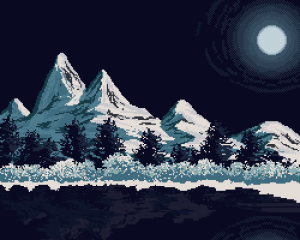
One can speculate that Dionae were originally discovered by Skrell Prospectors on an arctic planetoid orbiting the Xelp system. The Skrell Prospectors were originally sent to Xelp III in order to locate minerals that would be used for the reconstruction of Qerrbalak, but instead stumbled upon unique mineral surrounded by organic weeds, this mineral was later found to be Ambergris, leading to the ‘Ambergris Rush’ of the 2220s, where hundreds if not thousands of Skrell dedicated their time and energy to searching for more of this rare mineral. The rush would last until 2232 CE - when Skrell Prospectors could no longer locate Ambergris. It is suspected that during this period of time the Skrell had slaughtered what is now known as an Echion Colossus.
Skrell Discovery
The first documented discovery of Dionae occurred in 2247 CE. The JVSS Lu-Wahoq noted there was an inconsistency with data taken from a scan of the Kelo’Hen system. The inconsistency was soon labelled an astronomical anomaly, after they had discovered a large celestial object orbiting Kelo-Hen IIa, which seemed to be exhibiting flora-like properties. The JVSS Lu-Wahoq was ordered to probe and investigate the anomaly, which they soon did. There has been a debate on exactly what happened next, however, one thing can be agreed upon - The JVSS Lu-Wahoq was destroyed shortly after commencing the investigation.
It sent shockwaves throughout the Jargon Federation - many fearing that Glorsh-Omega had returned only shortly after its disappearance to continue its tyrannical reign. The Jargon Federation dispatched a Search & Rescue team - alongside with two Cruisers. When they had entered the Kelo’Hen System, they were welcomed by an overgrown derelict, filled with what seemed to be some kind of flora. The Search & Rescue Team suited themselves with EVA Gear, and ensured they were armed before going out to investigate the now derelict JVSS Lu-Wahoq.
The investigative team soon entered, discovery with what seems to be a completely empty vessel. There were multiple hull breaches, and much of the team had come to terms that they’d likely discover the deceased crew - but there was not even a body onboard. Venturing further, they stumbled on some of the growth that had seemed to have formed a two smaller spherical bulbs, and one large one. Samples were taken, and they continued to investigate. After the investigation was concluded, and ultimately deemed that the JVSS Lu-Wahoq was simply an anomaly itself - no one could understand what had happened to the corpses of the crew.
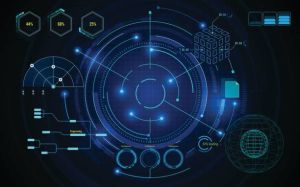
It was only once aboard the Search & Rescue Vessel that the team had stumbled on what seems to have been a part of the growth - a small worm-like creature had managed to stowaway with the EVA Gear, and had begun to chirp a song before making some incoherent sentences in Nral’Malik. The team was intrigued, and as soon as they possibly could, they returned to the nearest suitable Federation planet in order to allow the small creature to be studied.
The project was kept confidential, the JVSS Lu-Wahoq was covered up and cited to have been destroyed after a solar flare event had decimated the vessel - and it was lost to the void. A choice team of Biologists, Researchers and Linguists had been chosen to help investigate the creature - taking over four years before any breakthroughs had occurred. It was Linguistics Professor, Doctor Xuq’mqix Volq, that had managed to decipher the unknown language spoken by the creature. The Professor had successfully constructed a device similar to what could only be described as an Enigma Machine by Humans - which still exists today, and has been used to help decipher languages such as Sinta’Unathi, Siik’Maas and Vaurcaesian.
The creature was soon able to communicate with the Skrell team, explaining everything that had occurred on the JVSS Lu-Wahoq - from the attack on the vessel after it had provoked the collective cluster of the species to when they had assimilated the deceased and had truly begun to understand that they never intended to hurt the cluster. The creature was soon labelled as Dionae Primis, after a similar species on Qerrbalak that attacked the native fauna. Multiple conversations would occur for almost a year, before they would return with Professor Xuq’mqix to the Kelo’Hen System. The device constructed would allow for a conversation to be held - and if it were to fail, they had the Dionae Primis still with them to assist.
The Kelo’Hen System anomaly was soon contacted, and after a series of diplomatic talks, they were brought to the Nralakk System - where they still remain today. After numerous years spent studying and conversing with the cluster, they began to slowly be integrated into Skrell Society. The cluster was soon nicknamed the Conglomerated Choir of Nralakk, due the almost serene songs that could be heard originating from the cluster.
Skrell Aftermath
After the species was declassified, it sent a shockwave through Skrell Society. Some believed the species to want to harm them, whilst others believed them to be a symbol that Oernabi truly did exist - further allowing the creation of the Dienabi Religion, and largely others were just excited that a new sapient species had been discovered, especially a species capable of helping them during the reconstruction period. Dionae labour was first used in 2263 CE, mostly in assistance with reconstructing the majority of the terrestrial cities.
Dionae and Skrell have since formed a bond inseparable by almost anything. Dionae assist the Skrell in exchange for safe passage and havens in which they can grow and produce more Dionae. More information on this cluster can be found here. Dionae from the Nralakk Cluster are typically menial workers, but there have been some noted to have achieved various degrees similar to Skrell.
Another byproduct of this relationship is an order to destroy a theoretical form of the Dionae, noted to as a Titan, due to the inherent risk of intelligence singularity and other classified risks.
Human-Dionae History
First Discovery
Humanity first discovered the Dionae within the Weeping Stars Region in 2281 CE, during the First Interstellar War between the Coalition of Colonies and Solarian Alliance. Solarian Cruisers noted to have discovered the derelict Battleship, the SAMV Leviathan, near where one of the war’s most deadly interstellar assault had occurred, The Battle of the Binary. The SAMV Leviathan was noted to have an abnormal breach - not caused by any known form of weaponry at the time. Initially, many thought that the Coalition of Colonies had somehow managed to create an all-powerful weapon, but upon further investigation noted an unknown growth located on the inner port side hull - being Soldiers, they had just assumed it was a nest of space fauna of some sort that had begun to use the vessel as breeding grounds. Nothing much else was noted, and there was never any official investigation into the matter. The SAMV Leviathan was never seen again, and was suspected to have been swallowed by the Red Giant it orbited.
Human Discovery
A decade after Humanity had been discovered by the Skrell, a joint Human-Skrell exploratory fleet had been put into service for the sole reason to strengthen relations as well as to search for other sapient life. The fleet had been alerted to an inconsistency, similar to that found in 2247 CE within the Kelo’Hen System. The Skrell Researchers notified the Human counterpart of the possible discovery of a new cluster - exciting both parties. When the fleet would enter the Rueltab System on July 18th 2422, not only would the inconsistency prove to be a cluster, but it was on a much smaller scale than that discovered in the Kelo’Hen System.
The Fleet manoeuvred to be relatively close to the cluster, however, the Skrell warned to keep a distance in the event that they turned hostile. The Xuq Machine created almost two centuries early by Professor Xuq’mqix was implemented in almost every Science Vessel that had been built post-reconstruction era. Whilst configuring the machine, the cluster suddenly moved through space - many onlookers saying it was almost as if it was capable of manipulating the void to its will. The SASV Ophion was the first target, the cluster caused multiple hull breaches, and ultimately caused the overload of the warp engine, leading to an explosion that acted as an EMP to any ships within a kilometre of the explosion. Majority of the fleet has been disabled, and those left capable of fleeing did so. The Cluster was noted to be hostile, and in the following weeks after the Rueltab Incident, more and more Researchers pushed to continue investigating the Cluster finally getting their wish six months later.
Another Skrell and Human joint exploratory fleet was sent to investigate, however, the fleet had been outfitted with a unique chemical weapon, later discovered to have been created by the Skrell in the unlikely event that the Nralakk Cluster would turn hostile. The fleet approached what seemed to be a graveyard of ships, slowly and carefully manoeuvring between the large derelicts in order to locate the SASV Ophion. Once they reached the vessel, it was clear that the Cluster had made it their new home - the entire SASV Ophion was covered in Dionae, from bow to stern. Again, the Skrell had begun to configure the Xuq Machine, when the cluster attempted to attack - however it was rendered futile, as the chemical weapon was fired into the attacking force causing them to flee. It was during this period of recuperation that the Skrell finally managed to begin diplomatic talks with the Cluster.
The talks continued for over a month, with a blockade being put in the surrounding systems to prevent anyone from entering besides authorised vessels. Many of the deceased crew aboard the SASV Ophion were assimilated by the Cluster, and soon enough the Xuq Machine was no longer required and they began to converse in rudimentary Sol Common with Human Researchers. The Dionae from the SASV Ophion were deemed the property of the Solarian Alliance - considering the Rueltab System was located within the Outer Ring Sector - and so were declared to pay off their debts to Solarian Society in the form of menial labour. Many Dionae were put to work for the Solarian Alliance, mostly with mining and construction. Dionae from the SASV Ophion are only allowed to leave the Solarian Alliance after paying for their actions - which typically can take up to a decade to do so.
Human Aftermath
The tragedy of the SASV Ophion is still spoken about in the present, and many Solarians find themselves either out-right hating Dionae and showing it, or just ignoring their presence flat out. Every year on July 18th, there is a memorial held for the hundreds of crew that lost their lives in the Rueltab Incident, coinciding with the memorial there is typically a spike of deceased Dionae located the next day. Dionae from the Ophion Cluster are typically menial workers.
Epsilon Ursae Minoris
Epsilon Ursae Minoris, nicknamed The Planet of Eden due to its untouched wilderness, was discovered in 2428 CE by Captain Weirun Tup aboard the JVSS Qu’Ruii. The planet seemed to be emitting some sort of signal that interfered with electronic devices, first noted when entering the constellation weeks before. The JVSS Qu’Ruii designated that the planet was an astrological anomaly, and an investigation would be conducted.
Initially, many of the crew were sceptical in regards to the planet - citing it shouldn’t be possible that any interference wouldn't be heard, however, this further exciting others who thought that it may be a homeworld for a previously uncontacted sapient species. The JVSS Qu’Ruii descended onto Epsilon Ursae Minoris, setting up a minor camp in the surrounding area where they had landed - later to be the largest, and only settlement on Epsilon Ursae Minoris - Qerr’Naal.
Upon further inspection of the planet, it became increasingly more obvious that it seemed to be untouched, however as they pushed further and further into the forests of Epsilon Ursae Minoris they discovered something they’d never thought possible - a Dionae Colony. The team was astounded, not only that they had discovered a new Dionae Cluster, but also the Dionae had created a makeshift signal tower out of themselves.
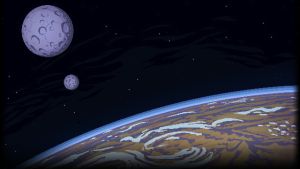
The team was greeted with enthusiasm, and after retrieval of the Xuq Machine began their diplomatic talks. Captain Weirun Tup was a follower of the Dienabi Religion, and the finding of the cluster could not be overlooked as a coincidence, and it was here that he began to write what is now known as ‘The Deathflower Journal’. Captain Weirun Tup would spend the next few months jotting his conversations as well as discoveries - growing closer and closer to the Dionae on Epsilon Ursae Minoris.
It was after the investigation had concluded, fifteen months after the discovery of the cluster, that the Jargon Federation wished to recall the team in order to continue exploring the Milky Way, but requested a Senior Researcher remain in order to continue the studies. It was here that the Captain stepped down from his position, and signed on to become the Director of Qerr’Naal. He would spend the next and last nine years of his life documenting his discoveries, as well as leading the small settlement to a large prosperous city where both Skrell and Dionae would work together.
August 19th 2440 CE was the day Director Weirun Tup disappeared. It plunged the settlement of Qerr’Naal into a state of emergency, many wondering what had occurred. It was the next morning that a dozen Dionae had come to Qerr’Naal, and laid down many of the Director’s personal items, stating that he had now joined the Dionae. At first, most of the settlement became alarmed however, as time moved on it become clearer and clearer that he had continued to live but within the Dionae. His journal was discovered amongst the items delivered by the Dionae, it was then mass-printed and spread through-out the settlement converting most to Dienabi as a wave of new ideals and concepts swirled around the Epsilon Ursae Minors Nlom.
Director Weirun Tup was venerated by the followers of Dienabi to have been the first to have truly ascended to something greater - and it was here that the Planet of Eden was considered to be extremely sacred to the followers of Dienabi. Many choose to pilgrimage to Epsilon Ursae Minoris and interact with the Director through the Dionae, and many others choose it to be their final resting place in order to join the Director in the Dionae Colossus.
The Dionae found on Epsilon Ursae Minoris have also noted to be incredibly advanced, even before that of their discovery. They are the first Cluster to have hailed another species through the creation of a makeshift radio tower, but also are the first cluster to have been seen creating a society without the assistance of genetic samples. Many Skrell Researchers will journey to Epsilon Ursae Minoris to study the now advanced society - where not only are Dionae becoming more popular and seen as equal, but the Dionae are now becoming more and more interested in spacefaring.
It is currently unknown why the Dionae on Epsilon Ursae Minoris have flourished, whilst those in the surrounding systems perished almost a thousand years ago - some speculate that it has something to with the other systems having been singular stars, whilst the Epsilon Ursae Minoris System was a set of Binary Stars.
Unathi-Dionae History
First Discovery
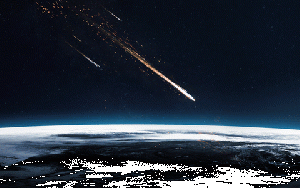
Unathi around the Northern Hemisphere of Moghes would have seen almost a hundred different meteors descend from the skies in early 2451 CE - most admiring the beauty of such a rare sight in the horrific conditions of the Wasteland. The Unathi did not consider that these were, in fact, hundreds of Dionae seeds entering Moghes atmosphere. It is unknown how the hundreds of seeds had not been seen before, but many have speculated that it was either a Solarian or Jargon vessel that had delivered a payload of the Dionae in order to assist with pushing back the growing wastelands on Moghes, however, it is still unknown.
Unathi Discovery
Unathi first discovered the Dionae several months after the meteorite shower, in an area that was previously just a large crater with an irradiated lake in the centre - but it was now what seemed to be some kind of Oasis. The Unathi couldn’t believe their eyes, many praising their ancestors for the gifts that had been brought upon them, more rushing up to the now lush dunes.
Hundreds of Unathi that had been wandering the wastelands stumbled on these spots, all had previously been some kind of crater but was now an Oasis in which they could thrive. Many began to take back the wastelands in these areas - settling their tribes in these newfound areas of life.
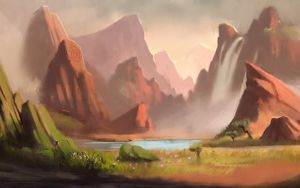
They began to investigate more, wondering if these were simple miracles, or if perhaps there was something behind the sudden spring of life into the wasteland. What they discovered shocked them even more - dozens of little worm-like creatures would disappear across the wastelands during the day, but suddenly would converge on the Unathi huts with various fires and such going. The Unathi began to slowly understand that these creatures were behind the wasteland’s restoration and realised that these creatures needed light or they’d perish. It took months before any of them could understand - Only after feeding on numerous corpses deep beneath the dunes of the wasteland did the Dionae begin to understand the Unathi and what they had to say.
The new-found relationship between the Unathi and Dionae prospered. In exchange for revitalizing the Wasteland, the Dionae would be sheltered within the confines of the Unathi huts when nightfall would begin and during the day they were expected to continue their efforts in providing a new home for the Unathi.
Unathi Aftermath
They live in a state of symbiosis with the Dionae, which clears the radiation from their crops. They are agricultural experts, capable of farming even in the wastes. The food produced from these are used to feed both themselves and their animal companions.
The larger villages plant huge swathes of dionae pods, which either get used to absorb the radiation in the surrounding area, or sent to new settlements to give them a headstart on the minute terraforming procedures. The more land that gets terraformed, the more crops that get planted, and the more biomass the Dionae have available.
The most well-known relationship between Dionae and Unathi in the Wastelands belongs to Clan Dorviza.
Venter's Cetus, Reade's Argus, and Other Groups
A recent discovery, Venter's Cetus is one of the few known Cetus-class Dionae. Rather reclusive, they seem to have an immense amount of knowledge in atmospheric systems, having designed a circulatory array within themselves. Slow and meticulous - this group has elected to provide the Sol Alliance with Cyclops bodies in exchange for large amounts of biomass from various species - with supplementary "credit" for sapient specimens. They do not seem to fear extinction at the phase they have found themselves to be in, with "shards" of the gestalt being of almost nil importance.
Discovered in orbit of Reade, there is also an isolated and small group that is sometimes seen on facilities across Tau Ceti. They are reported to be highly social, a Biesel bar even boasting an occasional Dionae bartending experience. This particular gestalt seems rather knowledgeable about the goings of supply and civilian departments- though they are often seen with distrust due to the rumours of Reade. Of course, these are the large known groups. Among these two more recent additions, there is a total of eighty-one known subgroups with various traits - and an unknown amount of yet undiscovered groups. More information will be added when available.
Beyond the History
Integration in Society
Their value, however - along with general helpfulness, high curiosity and impressive intelligence, even to the Skrell (who have approved them onto titles as high as Representatives since 2432) - gave the Dionae enough going for them that they were not phased out, and are commonly seen aboard space stations and spacecraft, especially human-owned. The Skrell have, however, started a new program to find and appropriate any other Dionae groups to ensure proper incorporation - or destruction, should the group be too dangerous. This program has already uncovered four dozen gestalts.
Mythological associations
Dienabi
Bearing a wood-like appearance, a small bulbous nymph and with the tales of necrophagy, the Dionae have been said to actually have been the species behind several mythical creatures - such as the humans' Green Man and Leshy, and even the Mandragora and Man-Eating Tree. Most notably - it has been linked to a wise, ancient God of Life by some Skrell - the Oernabi (Tree-God), who was said to be benevolent to those deemed worthy. Such a belief spawned the Dienabi Religion - the term literally meaning "tree child" - which stipulates that it is possible to ascend to the status of a noble Diona by protecting them with your life - after which they absorb and transform the martyr. Director Weirun Tup is considered to be the first "ascended" of this kind, earning him almost as much veneration.
Paspitami'rran
These beings are described as good-willed living trees. Hulking giants walking upon Adhomai compromised of small woodland spirits which actually “pilot” the massive wooden construct. They’re said to be able to change shape, speak all languages and create various magical items. In return only wanting a cup of blood and various foods. Although eerily similar to Dionae, due to the extremely long nights as well as the cold, it is impossible for Dionae to survive on Adhomai.
Additional information
As seen with reports of SASV Ophion, this species is still mostly unknown - in capabilities, origins and intentions. Many scientific organizations are willing to pay a good price for any useful data on the Dionae.







